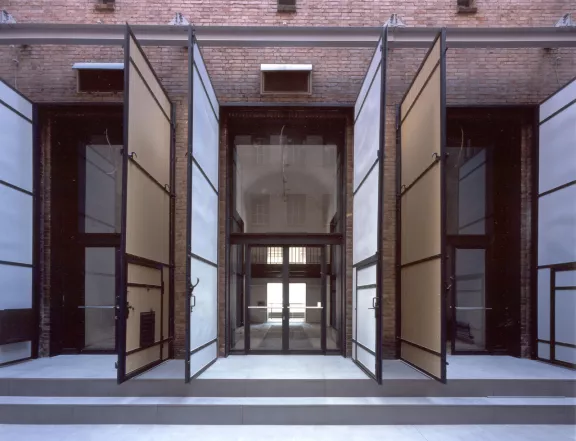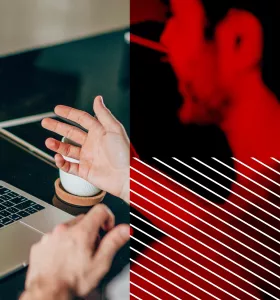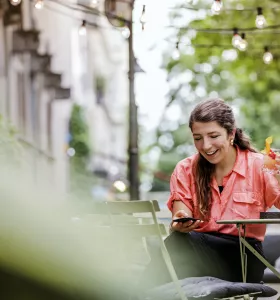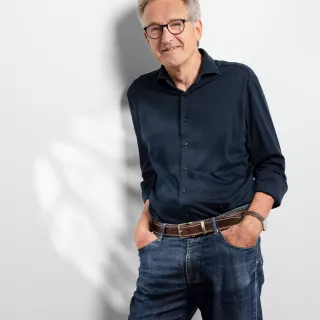Berlin: In 100 years from European industrial city to Europe’s vibrant centre of trends
Berlin, March 2021 Over a history stretching back around 800 years, Berlin has seen many radical changes shaping the face of the city – a process still continuing today. In around 1920, Berlin enjoyed an especially prosperous period. At that time, Greater Berlin was founded with a total of 20 boroughs and the city was ranked as Europe’s largest industrial metropolis. Over 100 years later, visitors and local residents can experience this rich industrial heritage in a new look. On this fascinating journey across time, you can enjoy exciting (Berlin) stories – and some surprises!
The heyday of industrial heritage – from “Chicago on the Spree to a modern metropolis”

For a time around 1900, Berlin could claim the crown as the largest metropolis on the European continent. And the city left its mark on the international history of commerce, technology, and architecture. From across the globe, urban planners visited “Chicago on the Spree” to find new inspiration for such topics as infrastructure and traffic systems for fast growing cities. In 1920, Berlin’s rapid development culminated in the founding of Greater Berlin, merging previously independent towns, rural communities, and estate districts to create the city we know today. In effect, prior to the merger, Berlin had already been a major city. But now with its twenty boroughs, it ranked as the world’s third largest municipality after New York and London – and the largest European industrial city. Rather than just being a production centre, Berlin was a research and development hub and simultaneously served as a sounding board for experiments with new technologies. Its traffic network and electricity and water supply systems were admired and emulated around the world. The city’s development was based on and fuelled by three factors – labour migration, and technology and knowledge transfer. From the early days of Prussia’s industrial revolution to Berlin as “Electropolis” and its post-war demise as a centre of the electrical industries, this city has been shaped by technical and industrial developments more than any other European capital.
New life in old walls
Even today, the former factories, industrial premises, and complexes from around 1920 still have a very special charm and influence the cityscape. Exceptionally, many of these impressive buildings have been filled with new life over the last years. Factory halls once echoing to the sounds of hammering and welding are now home to start-ups, artists’ studios, theatres and show rooms. Berlin’s multicultural creative scene has discovered these once abandoned areas, bringing them back to life with innovative concepts. Now, these old locations have gained a new significance. In Prenzlauer Berg, the former Schultheiss brewery site offers a prime example of new utilization. Transformed into the Kulturbrauerei, this complex has become popular for all kinds of cultural events. Neukölln’s old Kindl brewery, today an exhibition venue for contemporary art, has benefited from a similarly creative make-over. And along Kreuzberg’s Landwehr Canal, an old electricity substation from a hundred years ago has now gained a new lease of life. Instead of electricity, this venue now produces top-flight culinary delights. Aptly reflecting its unusual location, the restaurant – listed in the Gault & Millau gourmet guide – is called VOLT.
Along with many other venues, these illustrate just how 1920s industrial heritage is still very much in evidence in Berlin’s modern cityscape. With a range of guided tours on offer, locals and visitors alike can take a journey into the past and discover exciting (Berlin) stories at first hand. If an active tour is your thing, join a bike tour past old electricity substations, factories and breweries and learn why Berlin attracted so many breweries during industrialisation. A visit to the AEG Schöneweide industrial complex, now one of Berlin’s most important industrial heritage sites, is also a fascinating experience. The Industrial Salon Schöneweide, housed in an old Oberschöneweide transformer factory, presents historic technical devices and photographs. Here too, the Visitor Centre for Industrial Heritage provides an insight into a long-forgotten era and offers guided tours impressively showing how here the past and present are intertwined.
Imagefilm
Find out more
For more information on industrial heritage and tours, see visitberlin.de/en/berlin-modernism and the website of the Berlin Centre for Industrial Heritage industriekultur.berlin/en/
Former industrial sites now cultural venues
Kulturbrauerei Berlin in Prenzlauer Berg: kulturbrauerei.de (German)
KINDL Centre for Contemporary Art in Neukölln: kindl-berlin.com
Restaurants with industrial charm
Restaurant Volt in a former electricity substation restaurant-volt.de/en/
Restaurant eins44 in the yard of a former Berlin distillery eins44.com/english
Tours and guided tours
“Warm light and cool beer – Bike tour of Berlin’s industrial heritage”: komoot.de/tour/102567964
Grand Tour of Berlin Modernism: visitberlin.de/en/grand-tour-berlin-modernism
More on the Industrial Salon Schöneweide: industriesalon.de/en/
Find more Berlin inspiration on our Social Media

Instagram @visit_Berlin
Facebook fb.de/visitBerlin | fb.de/Berlin
Twitter @visitBerlin | @BerlinTourism | @visitBerlinNews
visitBerlin.de | about.visitBerlin.de
Impressions of our users on Instagram:
#visit_Berlin
#secretspots_Berlin
#foodspots_Berlin
The text can be used in extracts or edited. Please indicate the copyright visitBerlin. Please forward sample copy to: presse@visitBerlin.de or visitBerlin | Pressestelle | Am Karlsbad 11 | D-10785 Berlin.







